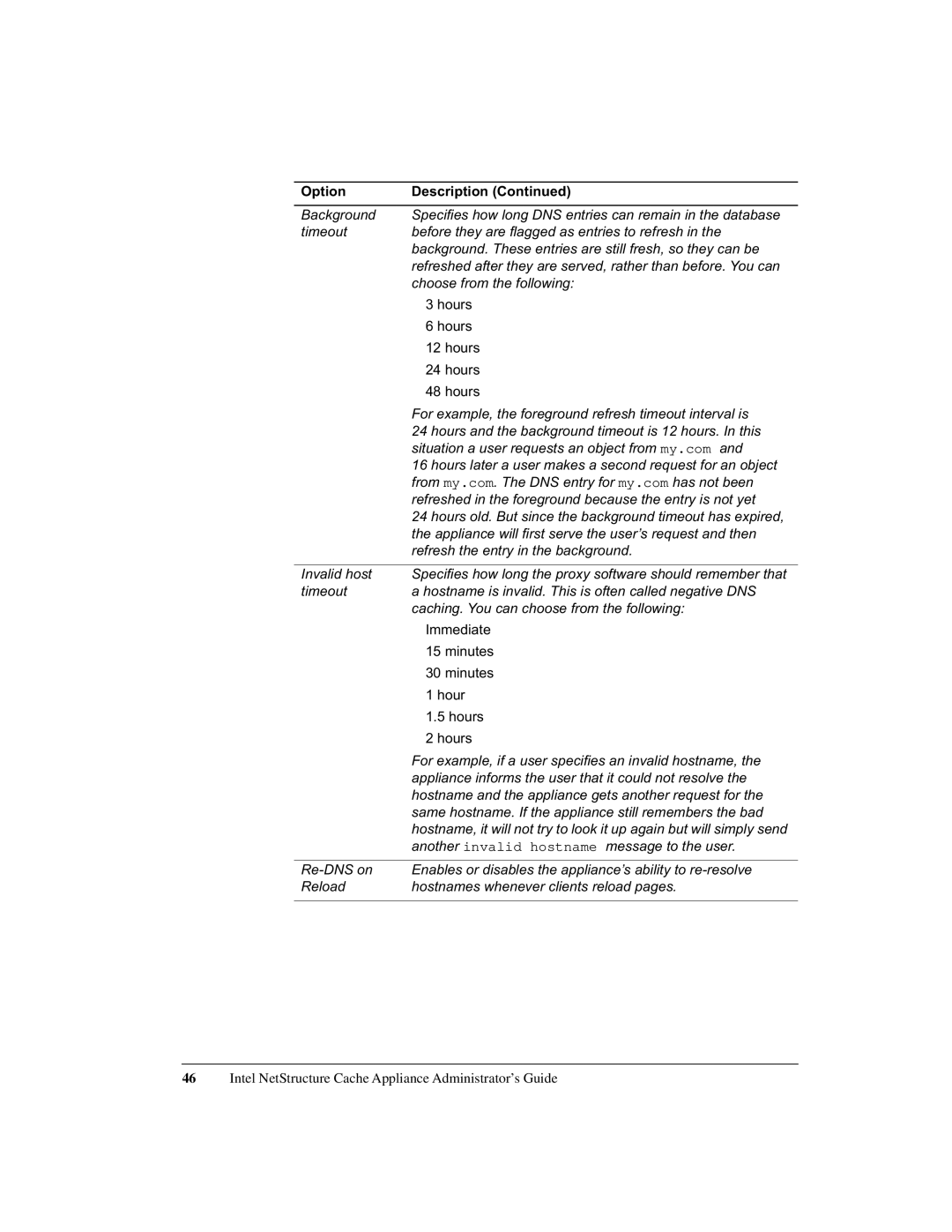
Option | Description (Continued) |
|
|
Background | Specifies how long DNS entries can remain in the database |
timeout | before they are flagged as entries to refresh in the |
| background. These entries are still fresh, so they can be |
| refreshed after they are served, rather than before. You can |
| choose from the following: |
| ❚ 3 hours |
| ❚ 6 hours |
| ❚ 12 hours |
| ❚ 24 hours |
| ❚ 48 hours |
| For example, the foreground refresh timeout interval is |
| 24 hours and the background timeout is 12 hours. In this |
| situation a user requests an object from my.com and |
| 16 hours later a user makes a second request for an object |
| from my.com. The DNS entry for my.com has not been |
| refreshed in the foreground because the entry is not yet |
| 24 hours old. But since the background timeout has expired, |
| the appliance will first serve the user’s request and then |
| refresh the entry in the background. |
|
|
Invalid host | Specifies how long the proxy software should remember that |
timeout | a hostname is invalid. This is often called negative DNS |
| caching. You can choose from the following: |
| ❚ Immediate |
| ❚ 15 minutes |
| ❚ 30 minutes |
| ❚ 1 hour |
| ❚ 1.5 hours |
| ❚ 2 hours |
| For example, if a user specifies an invalid hostname, the |
| appliance informs the user that it could not resolve the |
| hostname and the appliance gets another request for the |
| same hostname. If the appliance still remembers the bad |
| hostname, it will not try to look it up again but will simply send |
| another invalid hostname message to the user. |
|
|
Enables or disables the appliance’s ability to | |
Reload | hostnames whenever clients reload pages. |
|
|
46Intel NetStructure Cache Appliance Administrator’s Guide
